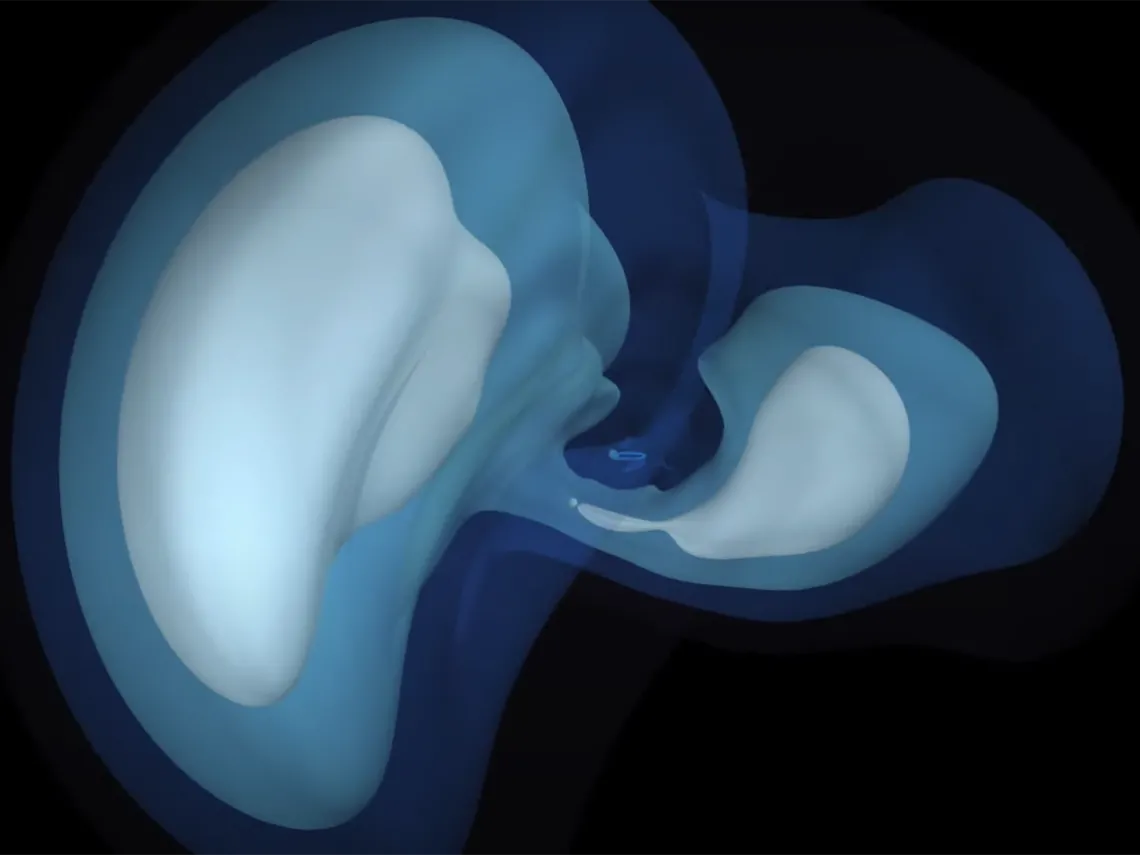Dark Matter Discoveries
Advancing astrophysics with supercomputer simulations

Dark matter wake simulation by Besla Group
How do you study something that doesn't emit, reflect or absorb light? Dark matter makes up over 80% of the universe but much about it is still a mystery.
Arizona theoretical astrophysicists are developing new approaches to studying dark matter using supercomputers rather than telescopes.
The Large Magellanic Cloud orbits the Milky Way galaxy and has traveled through its outer edges. Computer modeling can predict what effect the LMC had on the Milky Way’s dark matter as it passed, based on different dark matter theories.
Associate professor Gurtina Besla, doctoral student Nicolás Garavito-Camargo, and their team used the popular “cold dark matter” theory. Their model illustrated the wake that would be left behind as the Milky Way’s dark matter dragged on the LMC’s stars.
Harvard astronomers have been making observations of the area and confirmed what the Arizona computer model predicted, and the two teams have now been published in Nature.
Gurtina has been using the graphical processing power of the El Gato high performance computing system since it came on line in the Research Data Center in 2014. When the RDC launched the new Puma system in 2020, Gurtina bought 576 CPU cores to reserve an additional 420,480 CPU-hours of research time per month on Puma.
All members of the campus community are eligible to use 70,000 hours for research on RDC systems at no cost.
The LMC wake project provided additional interesting results, including support for the idea that the LMC is a recent interloper into our neighborhood. If it had been around for longer the structure of the wake would have been quite different.
The Besla Group will continue these studies using different models for the dark matter particle in simulations on the Puma system.
You can read more about the project in Arizona News.

